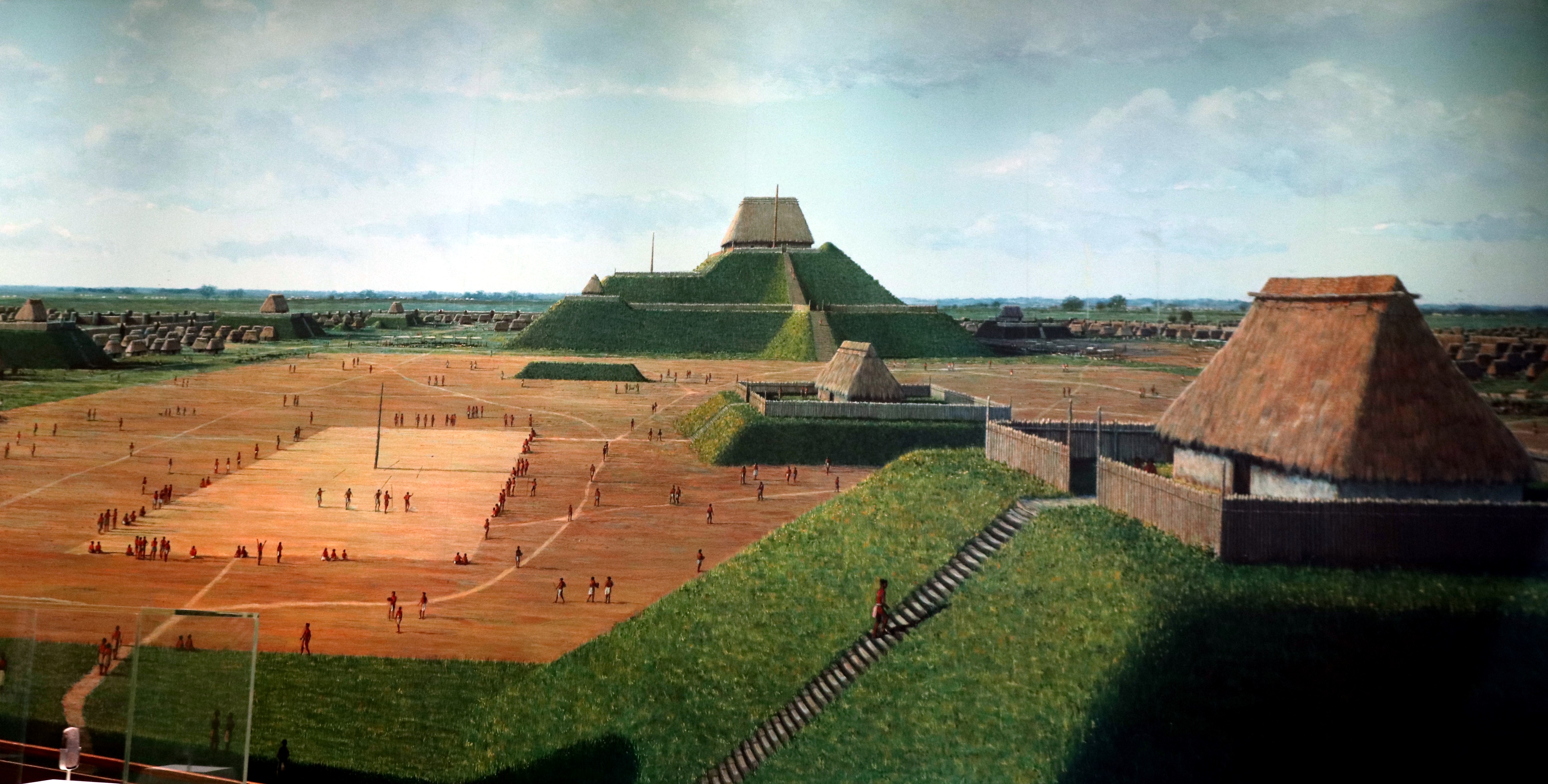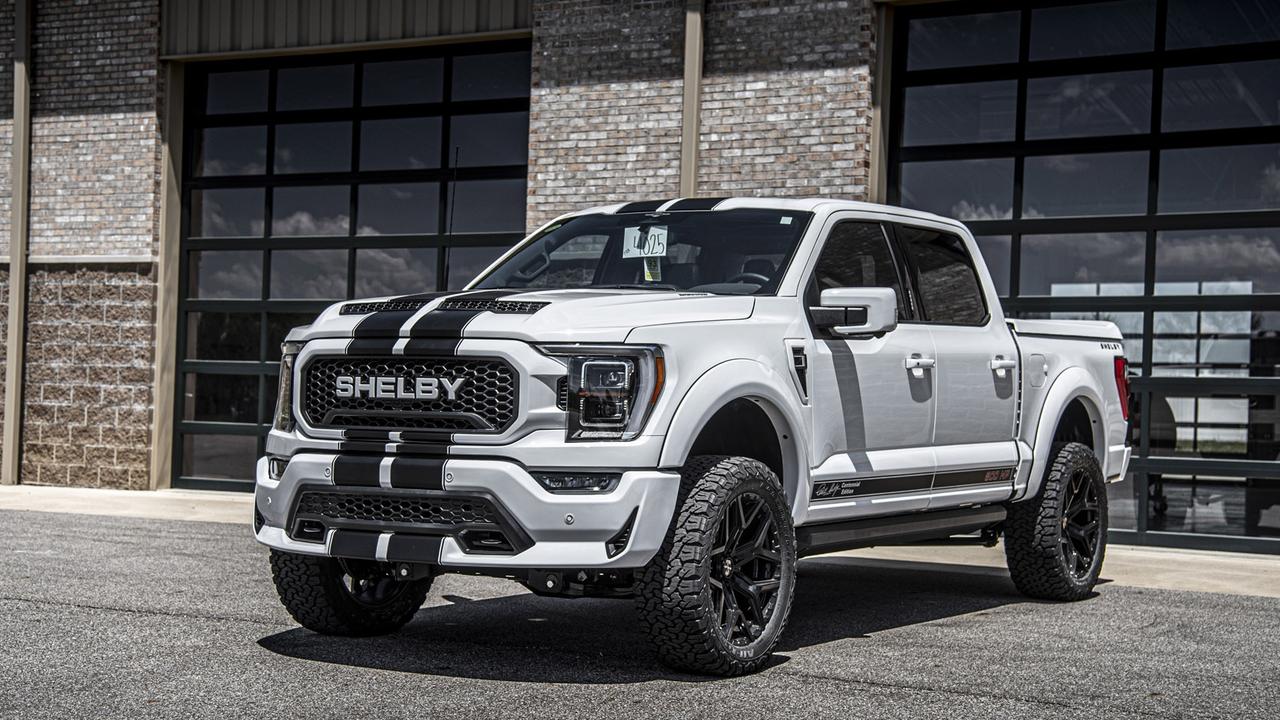
When we look back fondly on our favorite movies and shows, it’s often more than just the gripping plots or compelling characters that capture our imagination. Sometimes, the most memorable elements are the incredible vehicles that become characters in their own right, etching themselves into pop culture lore. From high-speed chases to fantastical transformations, these automotive legends are as important to storytelling as any actor.
Indeed, vehicles like the Hogwarts Express or the Millennium Falcon stir deep nostalgia, but it’s the cars, with their roaring engines and distinctive designs, that truly capture a unique place in cinematic history. They drive the plot, define a character, and often, become enduring symbols of the films and series they inhabit. “The Fast and the Furious” franchise, for instance, would be unthinkable without its array of powerful cars, and the dystopian world of “Mad Max” relies heavily on its outlandish vehicles for visual impact.
The fascination doesn’t end when the credits roll. For many enthusiasts, the question of “where are they now?” is just as captivating as the on-screen action. We’re embarking on an in-depth journey to uncover the post-filming tales and current resting places of some of the most famous cars to ever grace the big and small screens. Prepare to explore the enduring legacies of these vehicular stars and find out exactly what happened after their final cut.
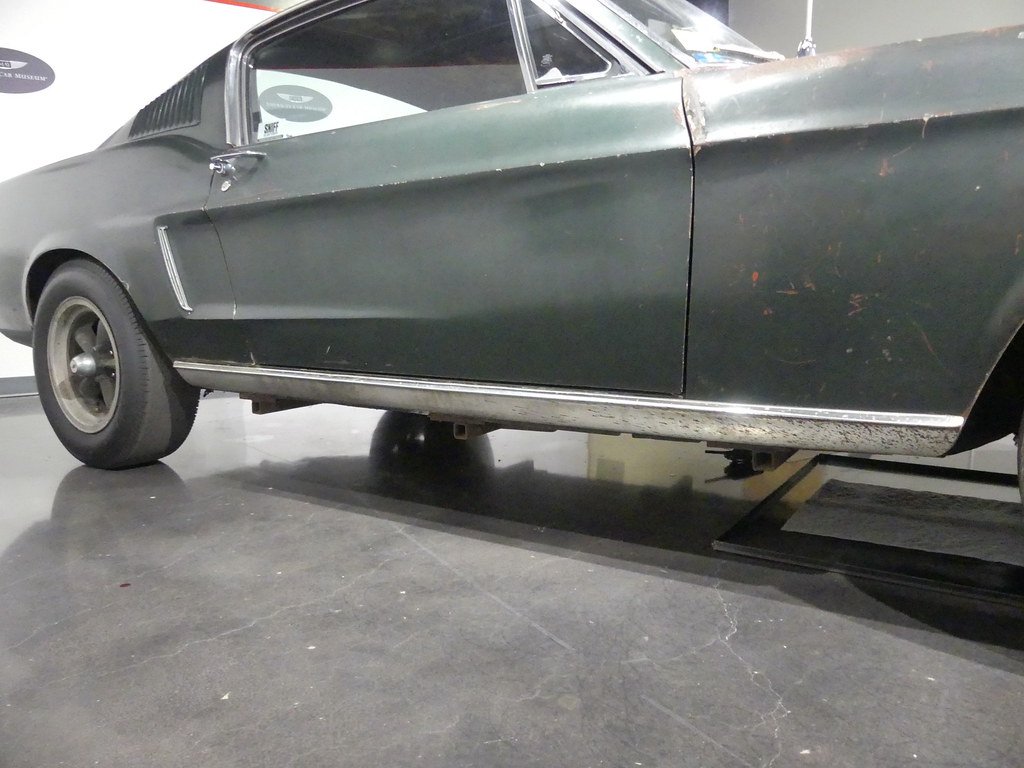
1. **Bullitt Mustang**If you could pinpoint one moment that ignited Hollywood’s enduring love affair with car chases, it would undoubtedly be the iconic pursuit through the streets of San Francisco in the 1968 film “Bullitt.” Steve McQueen, behind the wheel of a magnificent 1968 Ford Mustang GT, delivered a masterclass in cinematic driving, cementing this muscle car’s status as a legend. The raw, visceral thrill of the chase against a ’68 Dodge Charger set a new standard for action sequences, influencing countless films that followed.
Two of these magnificent Mustangs were utilized during the filming of the classic movie. For decades, it was widely believed that only one of these two cars had survived the rigors of production. This survivor eventually resurfaced, much to the delight of collectors and fans alike, in the possession of Robert Kiernan, who had acquired it years earlier through a simple newspaper advertisement for a modest $6,000.
Intriguingly, none other than Steve McQueen himself attempted to persuade Kiernan to part with the vehicle, but the owner steadfastly refused, holding onto this piece of automotive history for four long decades. Eventually, the torch was passed to Kiernan’s son, Sean Kiernan, who made the decision to sell the legendary Ford Mustang GT. It fetched an astonishing $3.74 million at Mecum Auctions on January 10, 2020, though the identity of the buyer remains a closely guarded secret, known only to Frank Mecum.
However, the story of the Bullitt Mustang took another surprising turn. The second car, long thought lost to history, eventually resurfaced in a junkyard located in Baja, California, adding another layer of intrigue to this cinematic icon. There are now ongoing discussions and plans in motion to meticulously restore this newly discovered legend and eventually bring it to auction, giving another enthusiast the chance to own a piece of the magic.
Car Model Information: 2024 Buick Enclave Premium FWD
Name: Ford Mustang
Caption: 2018 Ford Mustang GT 5.0
Aka: Ford T5 (Germany)
Manufacturer: Ford Motor Company
Production: March 1964 – present
ModelYears: 1965–present
Class: Unbulleted list
BodyStyle: Unbulleted list
Layout: Front-engine, rear-wheel-drive layout
Categories: 1970s cars, 1980s cars, 1990s cars, 2+2 coupés, 2000s cars
Summary: The Ford Mustang is an American automobile manufactured and marketed by Ford since 1964, as Ford’s longest nameplate in continuous production. Currently in its seventh generation, it is the fifth-best selling Ford car nameplate. The namesake of the “pony car” automobile segment, the Mustang was developed as a highly styled line of sporty coupes and convertibles derived from existing model lines, initially distinguished by its pronounced “long hood, short deck” proportions.
Originally predicted to sell 100,000 vehicles yearly, the 1965 Mustang became the most successful vehicle launch since the 1927 Model A. Introduced on April 17, 1964 (16 days after the Plymouth Barracuda), over 400,000 units were sold in its first year; the one-millionth Mustang was sold within two years of its launch. In August 2018, Ford produced the 10-millionth Mustang; matching the first 1965 Mustang, the vehicle was a 2019 Wimbledon White convertible with a V8 engine.
The success of the Mustang launch led to multiple competitors from other American manufacturers, including the Chevrolet Camaro and Pontiac Firebird (1967), AMC Javelin (1968), and Dodge Challenger (1970). It also competed with the Plymouth Barracuda, which was launched around the same time. The Mustang also had an effect on designs of coupes worldwide, leading to the marketing of the Toyota Celica and Ford Capri in the United States (the latter, by Lincoln-Mercury). The Mercury Cougar was launched in 1967 as a unique-bodied higher-trim alternative to the Mustang; during the 1970s, it included more features and was marketed as a personal luxury car.
From 1965 until 2004, the Mustang shared chassis commonality with other Ford model lines, staying rear-wheel-drive throughout its production. From 1965 to 1973, the Mustang was derived from the 1960 Ford Falcon compact. From 1974 until 1978, the Mustang (denoted Mustang II) was a longer-wheelbase version of the Ford Pinto. From 1979 until 2004, the Mustang shared its Fox platform chassis with 14 other Ford vehicles (becoming the final one to use the Fox architecture). Since 2005, the Mustang has used the D2C platform, unique to the Mustang.
Through its production, multiple nameplates have been associated with the Ford Mustang series, including GT, Mach 1, Boss 302/429, Cobra (separate from Shelby Cobra), and Bullitt, along with “5.0” fender badging (denoting 4.9 L OHV or 5.0 L DOHC V8 engines).
Get more information about: Ford Mustang
Buying a high-performing used car >>>
Brand: Ford Model: Mustang GT
Price: $29,997 Mileage: 37,001 mi.
Read more about: Remember Them? 13 Basic Engines Who Absolutely Survived It as Long-Haul Warriors.
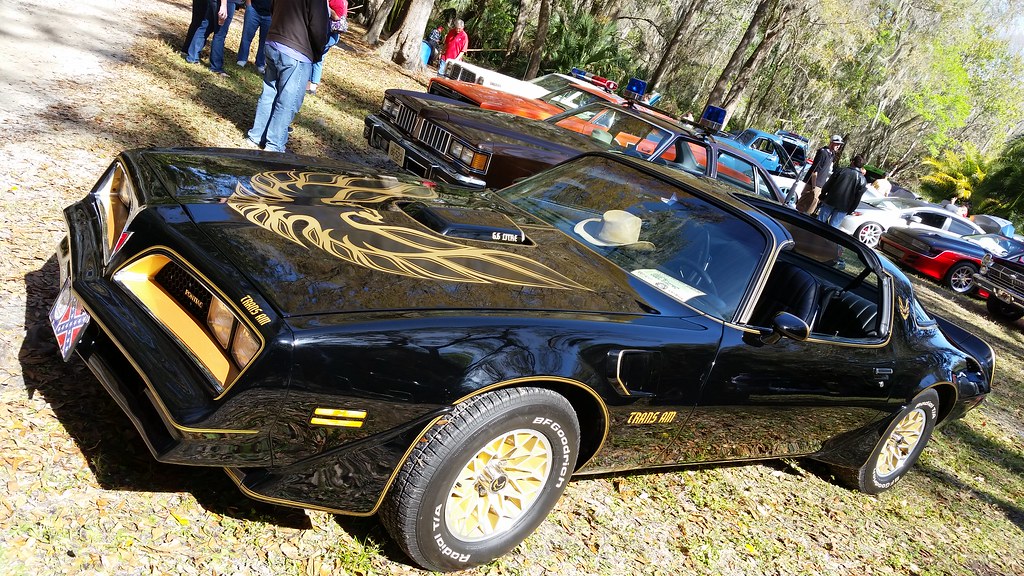
2. **Bandit Trans Am**From the high-octane world of Burt Reynolds’ film “Smokey And The Bandit” burst forth the unforgettable Bandit Trans Am, a true symbol of 1970s cool and rebellion. The story goes that Burt Reynolds himself, while casually browsing a magazine, spotted an advertisement for a Pontiac Trans Am and instantly recognized its potential as the perfect co-star for his upcoming movie. His intuition proved to be absolutely spot-on.
The film quickly soared to success, becoming the second-highest-grossing movie of 1977, surpassed only by “Star Wars.” This monumental achievement instantly catapulted the Firebird, specifically the modified 1976 models used in the movie, into the pantheon of silver screen’s most memorable muscle cars. Its black and gold livery, coupled with its powerful presence, became synonymous with the film’s spirit of adventure and defiance.
Tragically, the adrenaline-fueled stunts and explosive action sequences during filming took their toll. All four of the original Trans Ams, including the primary prop car, were utterly totaled during the production process. This fact, while unfortunate, is hardly surprising to anyone who has witnessed the movie’s extensive car chases and daring jumps. The vehicles were pushed to their absolute limits for our entertainment.
Despite the destruction of the film cars, a ray of hope emerged for fans. A promotional car used for the movie was later discovered, lovingly refurbished, and subsequently sold at the Barrett Jackson Scottsdale Auction for a world record-breaking $530,000. This remarkable sale not only preserved a piece of history but also led to the founding of Bandit Movie Cars, a company dedicated to recreating other vehicles from Burt Reynolds’ beloved films, including those from “Cannonball Run” and “Hooper.” Additionally, Bandit Movie Cars undertook a ground-up restoration of the only remaining Trans Am that was actually titled to Burt Reynolds himself, a car that has since been proudly displayed at various events, such as the Houston Autorama show, much to the delight of avid enthusiasts.
Car Model Information: 2024 Buick Enclave Premium FWD
Name: Pontiac Firebird
Caption: The second, third, and fourth generations of,the Pontiac Firebird Trans Am
Manufacturer: Pontiac (automobile)
Production: February 23, 1967 – August 30, 2002
ModelYears: 1967 – 2002
Class: Pony car,Muscle car
Platform: GM F platform
Related: Chevrolet Camaro
Layout: Front engine, rear-wheel-drive layout
Categories: 1970s cars, 1980s cars, 1990s cars, 2000s cars, All articles with dead external links
Summary: The Pontiac Firebird is an American automobile built and produced by Pontiac from the 1967 to 2002 model years. Designed as a pony car to compete with the Ford Mustang, it was introduced on February 23, 1967, five months after GM’s Chevrolet division’s platform-sharing Camaro. This also coincided with the release of the 1967 Mercury Cougar, Ford’s upscale, platform-sharing version of the Mustang.
The name “Firebird” was also previously used by GM for the General Motors Firebird series of concept cars in the 1950s.
Get more information about: Pontiac Firebird
Buying a high-performing used car >>>
Brand: Pontiac Model: Trans Am
Price: $29,997 Mileage: 37,001 mi.
Read more about: Buckle Up, Buttercup! 12 Passenger Pet Peeves That Will Make Your Driver (and Fellow Travelers) See Red
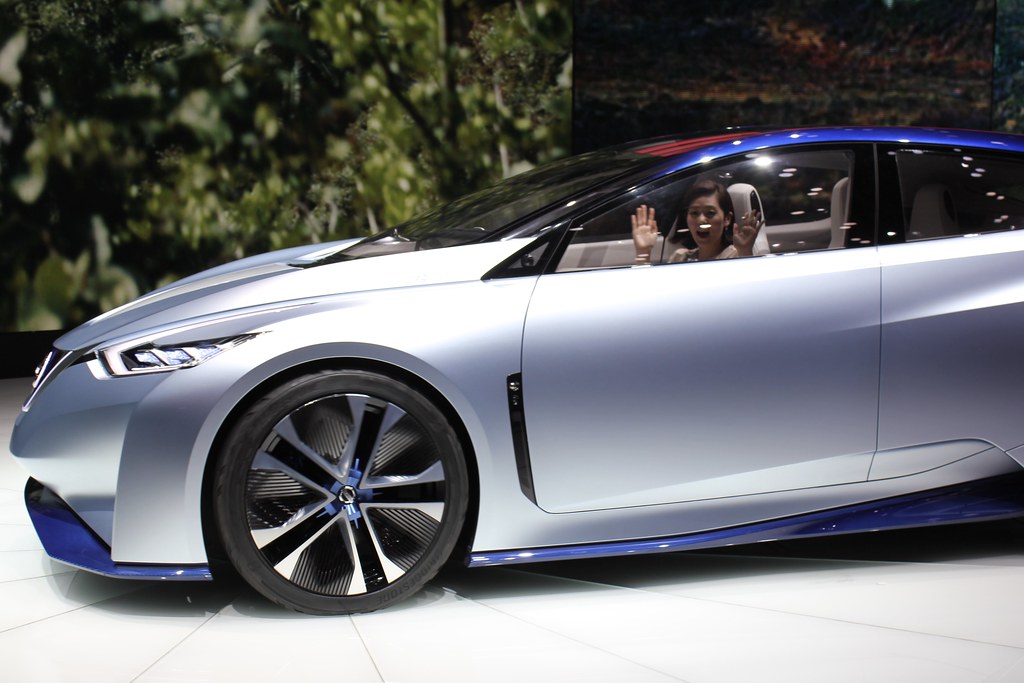
3. **Christine**Few cars have ever commanded the screen with such malevolent presence as Christine, the titular murderous 1958 Plymouth Fury from John Carpenter’s chilling film adaptation of Stephen King’s novel. This isn’t just any classic car; Christine is depicted as a sentient, possessive, and utterly deadly automobile with a mind, and a dark will, all its own. Her gleaming red paint and predatory grille became an iconic image of automotive terror, forever changing how we look at vintage sedans.
After her cinematic reign of terror, one of the cars that portrayed Christine found a remarkably quieter, and thankfully, non-murderous existence. The fate of this particular Plymouth Fury is a testament to the enduring appeal of these cinematic props. Instead of fading into obscurity or meeting a destructive end like many film vehicles, Christine was given a new lease on life.
This specific Christine, an actual screen-used car, was purchased by a young enthusiast named Bill Gibson at the tender age of 19. It’s a remarkable story of passion and preservation, as Gibson recognized the car’s unique place in film history. Against all odds, and despite the car’s sinister on-screen persona, he still owns it to this very day, making him the long-term custodian of a horror legend.
Gibson’s ownership ensures that this notorious Plymouth Fury, known for its terrifying self-repairing abilities and deadly devotion, has a stable and appreciative home. It’s a fascinating contrast to its on-screen life where it exacted vengeance and instilled fear. For fans of the movie, knowing that a piece of Christine’s infamous legacy lives on, cared for by a devoted owner, adds another layer to its compelling story. It stands as a reminder that some movie cars are truly unforgettable, even finding a peaceful retirement after their villainous roles.
Car Model Information: 1960 Plymouth Fury
Name: Plymouth Fury
Caption: 1959 Plymouth Sport Fury
Manufacturer: Plymouth (automobile)
Aka: Plymouth Sport Fury (1959, 1962–1971),Plymouth VIP (1966–1969)
Production: 1958–1978
ModelYears: 1959–1978
Assembly: bulleted list
Class: Full-size,Mid-size,Full-size,Mid-size,Full-size,Mid-size
Layout: FR layout
Predecessor: Plymouth Belvedere,Plymouth Plaza,Plymouth Savoy
Successor: Plymouth Gran Fury,Plymouth Gran Fury
Sp: us
Categories: 1960s cars, 1970s cars, All articles needing additional references, Articles needing additional references from December 2018, Articles with short description
Summary: The Plymouth Fury is a model of automobile that was produced by Plymouth from 1955 until 1989. It was introduced for the 1956 model year as a sub-series of the Plymouth Belvedere, becoming a separate series one level above the contemporary Belvedere for 1959. The Fury was a full-size car from 1959 until 1961, then a mid-size car from 1962 until 1964, again, a full-size car from 1965 through 1974, and again, a mid-size car from 1975 through 1978. From 1975 until 1977, the Fury was sold alongside the full-size Plymouth Gran Fury. In 1978, the B-body Fury was the largest Plymouth, and by 1979, there was no large Plymouth. This product gap was filled in 1980 with the R-body Gran Fury, followed by the M-body Fury in 1982. Production of the last V8, RWD Plymouth Fury ended at the Kenosha Main assembly plant in Kenosha, WI, on December 23, 1988. Unlike its sibling brand, Dodge, Plymouth would not live to see the resurgence of the large, V8/RWD sedan.
Get more information about: Plymouth Fury
Buying a high-performing used car >>>
Brand: Plymouth Model: Fury
Price: $75,000 Mileage: 44,509 mi.
Read more about: Navigating the Exactech Medical Alert: A Consumer Guide to Defective Joint Implants, Recalls, and Your Legal Rights
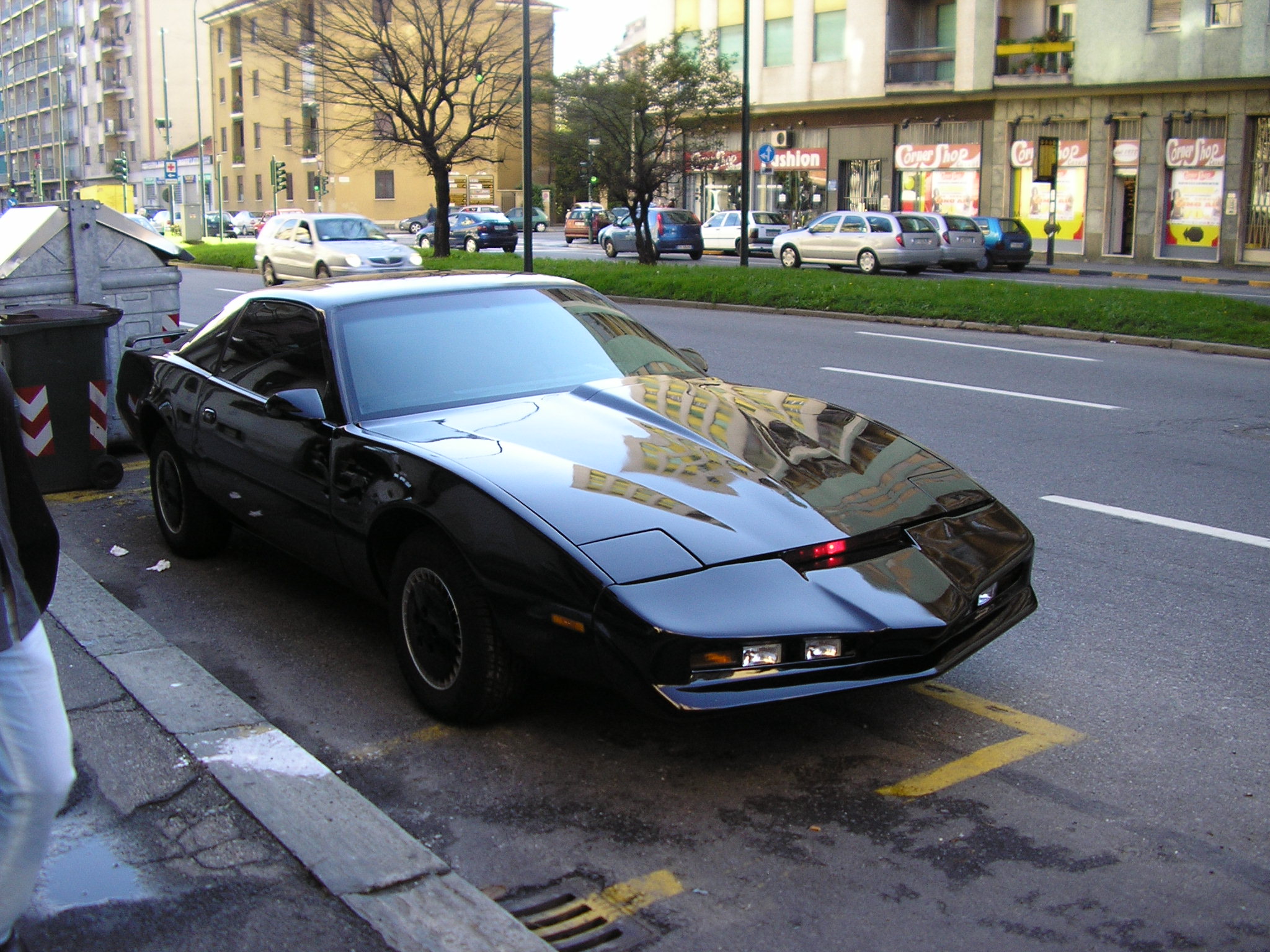
4. **K.I.T.T. from Knight Rider**The 1982 Pontiac Firebird Trans Am from the beloved TV series “Knight Rider” stands as a unique entry on any list of iconic vehicles because K.I.T.T. (Knight Industries Two Thousand) was not merely a prop, but a bona fide star of the show. Alongside David Hasselhoff’s Michael Knight, KITT’s advanced artificial intelligence, complete with a distinctive voice provided by William Daniels, allowed it to drive itself, engage in witty banter, and assist Knight in solving crimes, making it an indispensable partner in every mission.
KITT’s futuristic capabilities, from its super pursuit mode to its bulletproof exterior and turbo boost, captivated audiences and set a new benchmark for what a car could be on television. It wasn’t just a means of transportation; it was a character with personality, intelligence, and an unwavering loyalty, truly embodying the concept of a vehicular hero. The sleek design of the Pontiac Firebird Trans Am, enhanced with its signature red scanner bar, became instantly recognizable.
Given the demanding nature of the show, which saw KITT perform countless stunts and engage in thrilling action sequences, it’s perhaps not surprising that many vehicles were utilized. Depending on various sources, anywhere up to 25 different Trans Ams were employed across the show’s four seasons. Unfortunately, these cars were put through considerable stress, and very few are reported to have survived the rigorous production. Only five are said to have endured the show’s demanding pace.
These five surviving KITTs have embarked on diverse retirements, finding homes in various museums and theme parks, including Universal Studios and the prestigious Peterson Automotive Museum, where enthusiasts can marvel at their enduring legacy. Two of these precious artifacts are proudly owned by Knight Rider Historians Joe Huth and AJ Palmgren, who are dedicated to the preservation of the series’ memorabilia. They have even managed to track down the show’s F.L.A.G. Mobile Unit, the mobile headquarters, and KITT’s garage trailer, furthering the preservation efforts. For those eager to see a unique variant, the KITT Super Pursuit Mode, a faster and more aerodynamic transformation of the car, is on display at the Hollywood Cars Museum in Las Vegas.
Car Model Information: 2024 Buick Enclave Premium FWD
Name: Pontiac Firebird
Caption: The second, third, and fourth generations of,the Pontiac Firebird Trans Am
Manufacturer: Pontiac (automobile)
Production: February 23, 1967 – August 30, 2002
ModelYears: 1967 – 2002
Class: Pony car,Muscle car
Platform: GM F platform
Related: Chevrolet Camaro
Layout: Front engine, rear-wheel-drive layout
Categories: 1970s cars, 1980s cars, 1990s cars, 2000s cars, All articles with dead external links
Summary: The Pontiac Firebird is an American automobile built and produced by Pontiac from the 1967 to 2002 model years. Designed as a pony car to compete with the Ford Mustang, it was introduced on February 23, 1967, five months after GM’s Chevrolet division’s platform-sharing Camaro. This also coincided with the release of the 1967 Mercury Cougar, Ford’s upscale, platform-sharing version of the Mustang.
The name “Firebird” was also previously used by GM for the General Motors Firebird series of concept cars in the 1950s.
Get more information about: Pontiac Firebird
Buying a high-performing used car >>>
Brand: Pontiac Model: Firebird Trans Am
Price: $29,997 Mileage: 37,001 mi.
Read more about: Unleashing Automotive Legends: The 15 Iconic Vehicles We’re Desperate to See Roar Back into Production!
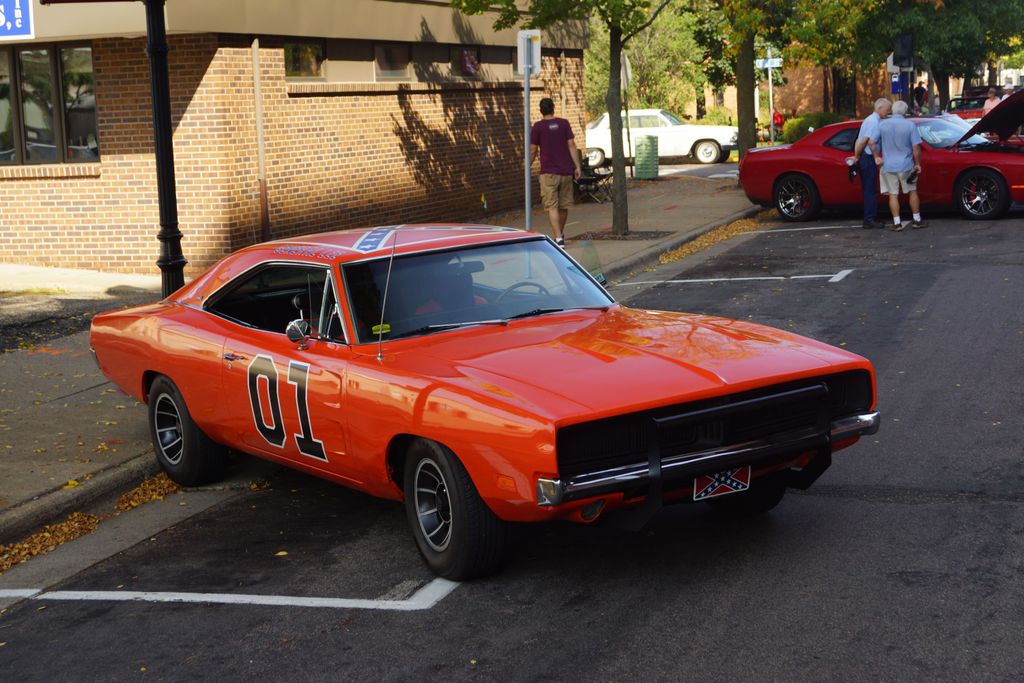
5. **General Lee from The Dukes of Hazzard**The iconic 1969 Dodge Charger, famously known as the General Lee from “The Dukes of Hazzard,” is synonymous with thrilling stunts, high-speed chases, and gravity-defying jumps. Fans of the show, which ran for an impressive 146 episodes from 1979 to 1985, are keenly aware that the production team went through an astonishing number of these classic muscle cars. Depending on various sources, anywhere between 200 to over 300 Dodge Chargers were reportedly totaled during the course of filming, a testament to the show’s action-packed nature.
Despite the massive destruction of vehicles, a remarkable survivor stands out. During the initial episodes, filming took place in Georgia before the production relocated to California. Of the six Dodge Chargers used in those early Georgia episodes, only one managed to escape the carnage completely intact. This particular car, affectionately dubbed the “Georgia Dodge,” is a rare gem in automotive history. It’s now proudly displayed for public viewing at the Volo Museum in the village of Volo, just outside Chicago.
The reason for its pristine survival is fascinating: this specific Georgia Dodge was never actually used in filming. Its use was interrupted by the sudden relocation of the production to California, sparing it from the jumps and crashes that claimed its brethren. Consequently, it remains one of Season 1’s original Chargers and holds the unique distinction of being the only Dodge to survive the entire series in perfect, unrestored condition.
While the Georgia Dodge is the undisputed champion of survival, 17 other cars from the series did manage to endure, albeit in varying states of repair, some requiring extensive ground-up restorations. One notable car belonged to the show’s co-star, John Schneider, who played Bo Duke, and claimed his General Lee was a stunt car from the series. Sadly, it was tragically crushed by a falling tree during Hurricane Ida’s destructive rampage across Louisiana in 2021. Fortunately, other stunt cars are still on display for fans to admire, including one at the Hollywood Cars Museum in Las Vegas and another at the Hollywood Star Cars collection in Gatlinburg, Tennessee, ensuring the legacy of this beloved Charger lives on.
Car Model Information: 2023 Dodge Charger R/T
Name: Dodge Charger
Caption: 1969 Dodge Charger
Manufacturer: Dodge
Production: 1966–1978,1981–1987,2005–present
ModelYears: 1966–1978,1982–1987,2006–present
Categories: 1960s cars, 1970s cars, 1980s cars, 2000s cars, 2010s cars
Summary: The Dodge Charger is a model of automobile marketed by Dodge in various forms over eight generations since 1966.
The first Charger was a show car in 1964. A 1965 Charger II concept car resembled the 1966 production version.
In the United States, the Charger nameplate has been used on mid-size cars, personal luxury coupes, subcompact hatchbacks, and full-size sedans.
Get more information about: Dodge Charger
Buying a high-performing used car >>>
Brand: Dodge Model: Charger
Price: $35,000 Mileage: 42,779 mi.
Read more about: Buckle Up, Buttercup! We’re Ranking 15 Legendary Movie Cars That Drove Straight Into Our Hearts (and Pop Culture!)
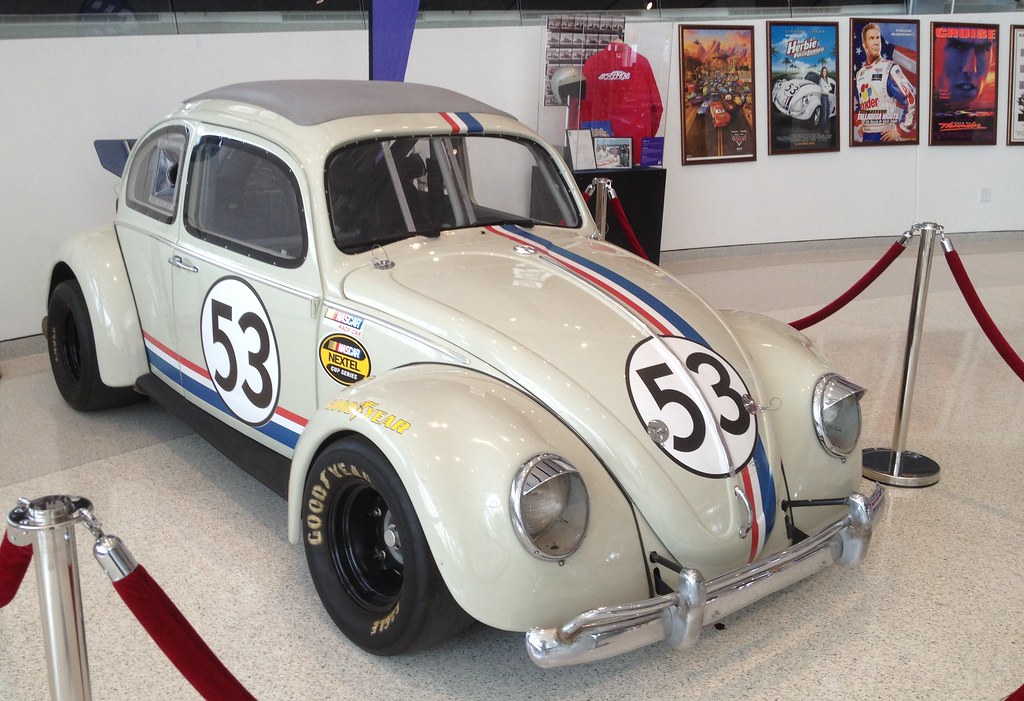
6. **Herbie: The Love Bug Volkswagen Beetle**Who could forget Herbie, the delightful and mischievous 1963 Volkswagen Beetle with a mind of its own, affectionately known as “The Love Bug”? Across a beloved movie series, Herbie zoomed into the hearts of audiences, showcasing not just impressive speed, but a distinct personality. The heartwarming adventures and comedic antics of Herbie created a lasting legacy for the unassuming Beetle, transforming it into a cherished cinematic star.
Surprisingly, many Herbies from the original movie series are still in existence today, a testament to the durability of the VW Beetle and the dedication of collectors. Among these surviving vehicles is the stunt car from the very first film, 1969’s “The Love Bug.” This particular vehicle, known affectionately as Herbie #10, holds a special place in history as the oldest remaining Herbie from the original movie that survives to this day.
After its initial starring role, Herbie #10 made a cameo appearance in the 1974 sequel “Herbie Rides Again,” albeit in a less glamorous role as a junk pile car. Following its supporting role, Herbie #10 spent some time sitting neglected in the Disney back lot, a fate not uncommon for film props. However, its story didn’t end there; this beat-up Herbie eventually hit the road again, participating in a roadshow alongside other celebrity cars of the era, bringing joy to fans who remembered its earlier exploits.
Herbie #10’s journey continued with a stint in the Swigart Car Museum before it was acquired by collector Tory Alonzo, who then generously loaned it out to the Antique Automobile Club of America. After several years, it was sold to Texan VW collector Clayton Capps, who still proudly owns Herbie #10 today, occasionally taking this old, beat-up Love Bug to shows around Texas. This ensures that its unique history and charm continue to be shared with new generations of fans. Furthermore, other Herbies from the original movie are still out there, with one housed at the Hollywood Cars Museum in Las Vegas. Herbie fanatics and VW Beetle enthusiasts can also enjoy the 1963 model used in 2005’s “Herbie Fully Loaded” at the Petersen Automotive Museum in Los Angeles, and a 1967 model from “Herbie Goes to Monte Carlo” can be found at the Hollywood Star Cars Museum in Gatlinburg.
Car Model Information: 2012 Volkswagen Beetle 2.5L
Sp: uk
Name: Volkswagen Type 1,”Beetle”
Caption: 1965–1966 Volkswagen Käfer
Manufacturer: Volkswagen
Alt: A front-three quarters view of a pale-yellow Volkswagen Käfer. It features 165/80R15 tires, which shod 15×4. 5″ silver, circular wheels. The Käfer features a beetle-like body, and its window is open. The picture is taken with much greenery in the background, and the photo was edited to give it a more warmer tone.
Aka: List of names for the Volkswagen Type 1
Assembly: #Markets and assembly
Designer: Ferdinand Porsche
Class: Small family car
BodyStyle: Sedan (automobile),convertible
Production: 1938–2003,21,529,464 produced
Successor: Volkswagen Golf Mk1,Volkswagen Gol#First generation (Typ30, 1980),Volkswagen New Beetle
Layout: Rear-engine, rear-wheel-drive layout
Engine: Petrol,Volkswagen air-cooled engine,1192 cc H4,1285 cc H4,1493 cc H4,1584 cc H4
Transmission: manual transmission,Saxomat,Autostick
Wheelbase: convert
Length: convert
Width: convert
Height: 1500 mm
Abbr: on
Weight: convert
Categories: 1940s cars, 1950s cars, 1960s cars, 1970s cars, 1980s cars
Summary: The Volkswagen Beetle, officially the Volkswagen Type 1, is a small family car produced by the German company Volkswagen from 1938 to 2003. A global cultural icon known for its bug-like design, the Beetle is widely regarded as one of the most influential cars of the 20th century. Its production period of 65 years is the longest for any single generation of automobile, and its total production of 21.5 million units makes it the most produced car of a single platform in history and the second-highest of all nameplates manufactured in the 20th century.
The Beetle was conceived in the early 1930s. The leader of Nazi Germany, Adolf Hitler, decided there was a need for a people’s car—an inexpensive, simple, mass-produced car—to serve Germany’s new road network, the Reichsautobahn. The German engineer Ferdinand Porsche and his design team began developing and designing the car in the early 1930s, but the fundamental design concept can be attributed to Béla Barényi in 1925, predating Porsche’s claims by almost ten years. The result was the Volkswagen Type 1 and the introduction of the Volkswagen brand. Volkswagen initially slated production for the late 1930s, but the outbreak of war in 1939 meant that production was delayed until the war had ended. The car was originally called the Volkswagen Type 1 and marketed simply as the Volkswagen. It was not until 1968 that it was officially named the “Beetle”.
Volkswagen implemented designations for the Beetle in the 1960s, including 1200, 1300, 1500, 1600, 1302, and 1303. Volkswagen introduced a series of large luxury models throughout the 1960s and 1970s—comprising the Type 3, Type 4 and K70—to supplement the Beetle, but none of these models achieved the level of success that it did. In 1972, it became the best-selling car of all time, a position it retained for nearly three decades. Rapidly changing consumer preferences toward front-wheel drive compact hatchbacks in Europe prompted Volkswagen’s gradual shift away from rear-wheel drive, starting with the Golf in 1974. In the late 1970s and ’80s, Japanese automakers dominated some markets around the world, which contributed to the Beetle’s declining popularity.
The Beetle remains one of the best-selling cars of all time and is the first to sell over 20 million units. Over its lifespan, its design remained consistent, yet Volkswagen implemented over 78,000 incremental updates. These modifications were often subtle, involving minor alterations to its exterior, interior, colours, and lighting. Some more noteworthy changes included the introduction of new engines, models and systems, such as improved technology or comfort. The Beetle maintains a substantial cultural influence and is regarded as one of the most iconic vehicles in automotive history; its success largely influenced the way automobiles are designed and marketed, and propelled Volkswagen’s introduction of a Golf-based series of vehicles.
Get more information about: Volkswagen Beetle
Buying a high-performing used car >>>
Brand: Volkswagen Model: Beetle
Price: $13,985 Mileage: 27,389 mi.
Read more about: Wheels of Fortune: Uncovering 15 Legendary Celebrity-Connected Cars That Revved Past a Million Dollars
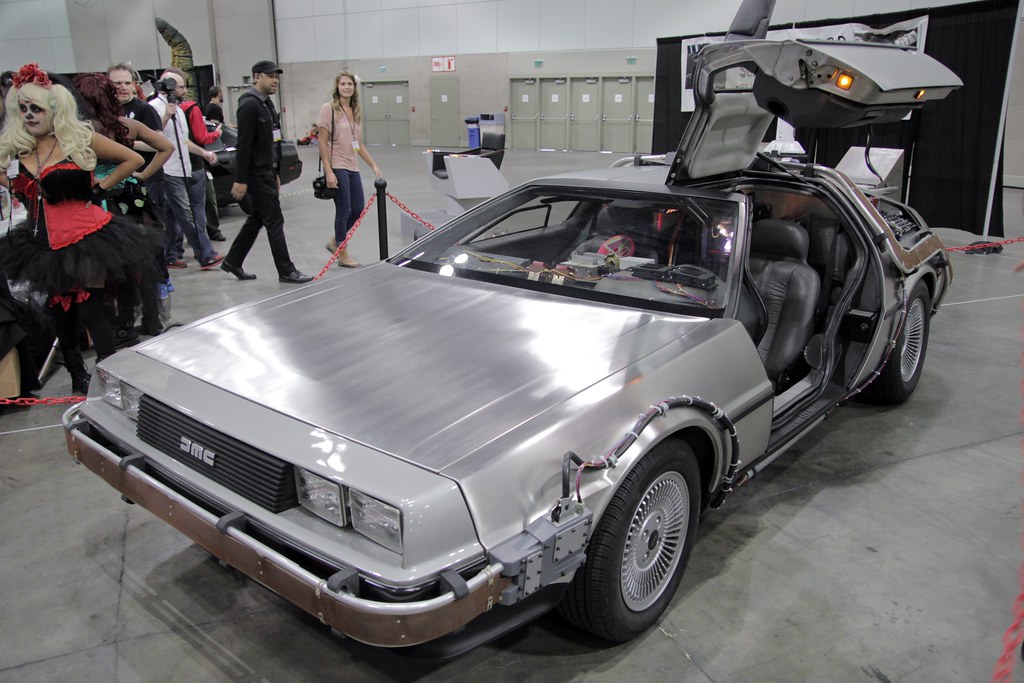
7. **The DeLorean from Back to the Future**The time-traveling DeLorean from the “Back to the Future” trilogy is arguably one of the most iconic vehicles in cinematic history, instantly recognizable even today. What’s particularly fascinating is the origin story of this legendary machine: it was initially conceived as a refrigerator in early drafts of the script. However, fate intervened with John DeLorean’s arrest and subsequent drug trafficking charge in 1982, prompting scriptwriters Robert Zemeckis and Bob Gale to hilariously pivot, deciding that changing the movie’s time-travel device to a DeLorean would be a brilliant stroke of genius.
This stroke of genius not only gave the DeLorean Motor Company an unexpected resurgence in pop culture but also presented a more practical and visually appealing vehicle for the incredible scientific feats imagined by the ingenious “Doc” Brown. It’s hard to imagine how even Doc Brown could have propelled a refrigerator to the critical 88mph needed for temporal displacement, so, with the benefit of hindsight, this decision proved to be an absolutely fantastic idea, lending a sleek, futuristic aesthetic to the time machine.
Across the course of the beloved trilogy, a total of six DeLoreans were specifically used for filming the various scenes and stunts. Each played a vital role in bringing the adventures of Marty McFly and Doc Brown to life, traversing different eras and dimensions. These cars, each modified with their distinctive flux capacitors and temporal displacement units, became synonymous with groundbreaking cinematic special effects.
Of these six DeLoreans, the car that enjoyed the most screen time and became the primary vehicle for many memorable scenes is the only one currently available for public viewing in the United States. Since 2016, it has been proudly housed at the Petersen Automotive Museum in Los Angeles, allowing fans to get up close to a true piece of movie magic. The other five DeLoreans, along with an extra fiberglass model specifically crafted to portray the flying DeLorean seen in the climatic final scene of the original movie, all met with various different fates after production concluded. However, adding to the intrigue, Gatlinburg’s Hollywood Star Cars Museum also claims to have a DeLorean on display that they state was driven by Michael J. Fox, confidently asserting on its website’s FAQ section that “the cars are all the genuine vehicles from movies and TV shows!” This offers another exciting opportunity for enthusiasts to potentially glimpse a piece of this extraordinary cinematic legacy.
Continuing our deep dive into iconic Hollywood machinery, we now explore the enduring legacies and present-day locations of seven more unforgettable automotive stars. This journey takes us from the sleek, gadget-laden vehicles of espionage to fantastical flying machines and even ghost-hunting ambulances, truly showcasing the diverse and imaginative roles cars have played in our favorite stories.
Car Model Information: 1982 Delorean DMC-12
Name: DMC DeLorean
Alt: 1983 DeLorean
Caption: 1983 DeLorean
Manufacturer: DeLorean Motor Company
Production: January 21, 1981 – December 1982
ModelYears: 1981–1983
Assembly: Dunmurry
Designer: Giorgetto Giugiaro
Class: Sports car
BodyStyle: coupé
Layout: Rear-engine, rear-wheel-drive layout
Doors: Gull-wing doors
Engine: 2.85 L
Abbr: on
Powerout: 130 hp
Transmission: 5-speed manual ,3-speed automatic
Wheelbase: 2413 mm
Length: 4267 mm
Width: 1988 mm
Height: 1140 mm
Weight: 1233 kg
Sp: us
Categories: 1980s cars, All Wikipedia articles written in American English, Articles with short description, Automobiles with backbone chassis, Automobiles with gull-wing doors
Summary: The DMC DeLorean is a rear-engine, two-seat sports car manufactured and marketed by John DeLorean’s DeLorean Motor Company (DMC) for the American market from 1981 until 1983—ultimately the only car brought to market by the fledgling company. The DeLorean is sometimes referred to by its internal DMC pre-production designation, DMC-12, although this was not used in sales or marketing materials for the production model.
Designed by Giorgetto Giugiaro, the DeLorean is noted for its gull-wing doors and brushed stainless-steel outer body panels, as well as its lack of power and performance. Though its production was short-lived, the DeLorean became widely known after it was featured as the time machine in the Back to the Future films.
With the first production car completed on January 21, 1981, the design incorporated numerous minor revisions to the hood, wheels and interior before production ended in late December 1982, shortly after DMC filed for bankruptcy and after total production reached an estimated 9,000 units.
Despite the car having a reputation for poor build quality and an unsatisfactory driving experience, the DeLorean continues to have a strong following, driven in part by the popularity of Back to the Future. 6,500 DeLoreans were estimated to still be on the road as of 2015.
Get more information about: DMC DeLorean
Buying a high-performing used car >>>
Brand: DeLorean Model: DeLorean
Price: $129,950 Mileage: 3,145 mi.
Read more about: Design Disasters Unveiled: 10 Tesla Cybertruck Flaws So Glaring, Owners Can’t Hide Them From Anyone
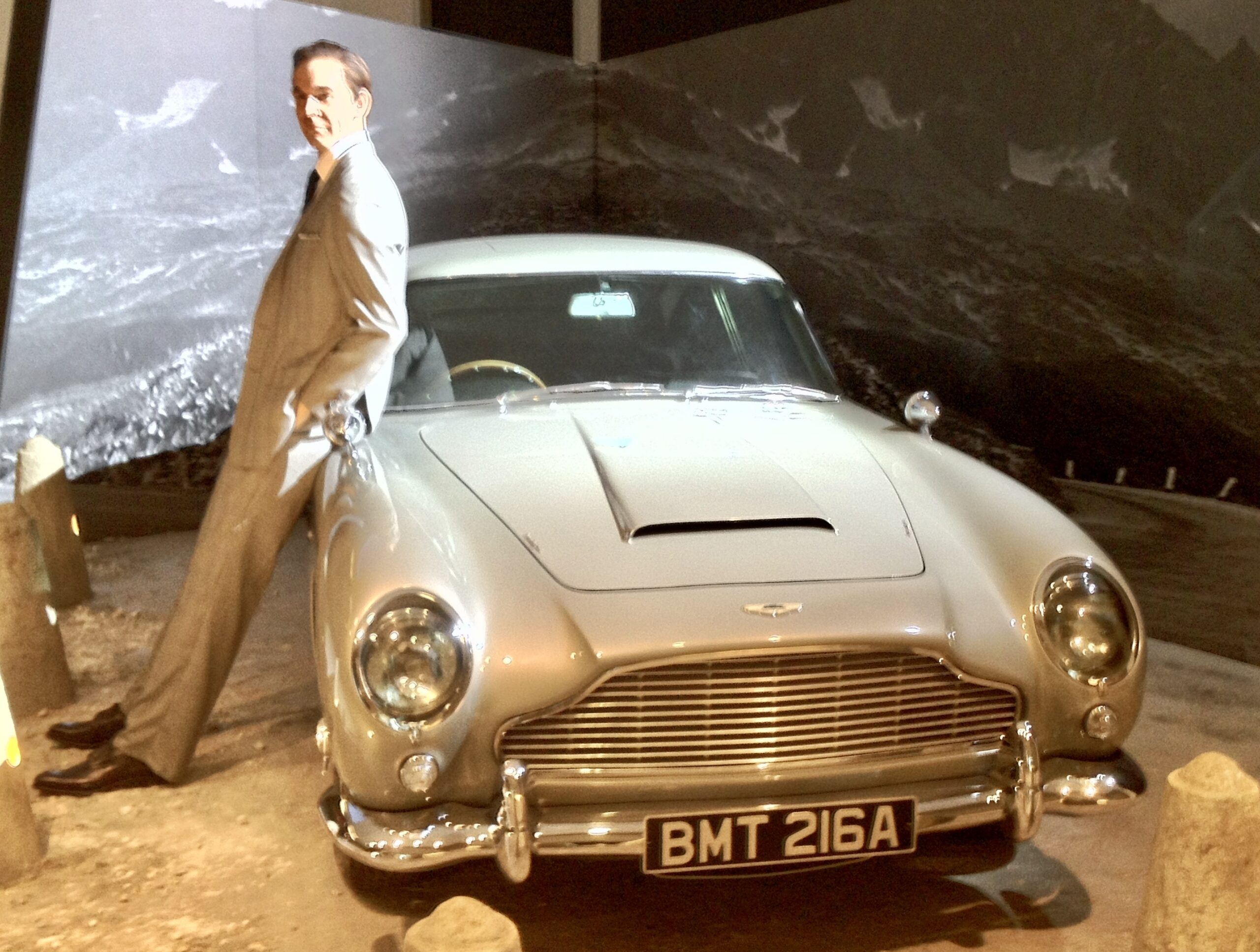
8. **The Aston Martin DB5 from James Bond**Arguably the most iconic movie car of all time, the 1963 Aston Martin DB5 made its unforgettable James Bond debut in 1964’s “Goldfinger,” followed by another dynamic appearance in 1965’s “Thunderball.” Piloted by the late, great Sir Sean Connery, this silver DB5 was a marvel of espionage technology, featuring an array of spy-assisting gadgets and features, including a bulletproof shield and a thrilling ejector seat. It instantly became synonymous with the sophisticated world of 007.
Following its time on screen in “Thunderball,” the car embarked on an eventful real-world history. It was first sold to collector Gavin Keyzar, who later passed it on to Utah jeweler Richard Losee. Losee kept this prized possession for fifteen years before selling the silver sports car at Sotheby’s New York auction in 1986, where car collector Anthony V. Pugliese III won the bidding. Pugliese ensured the DB5 remained in the public eye, proudly attending car shows and Bond events across the United States.
However, the car’s story took a mysterious turn in 1997 when James Bond’s most famous ride inexplicably disappeared from a secure hangar at Boca Raton Airport in Florida. This disappearance has fueled decades of speculation among fans and automotive enthusiasts alike, adding another layer to its legendary status.
Adding to the intrigue, the car was recently rumored to have resurfaced somewhere in the Middle East. Christopher Marinello, the chief executive of Art Recovery International, was quoted as saying in the British broadsheet The Telegraph, “There are major automobile collectors in those countries and I have intelligence that the car could be in one of them and may have even travelled between them.” Unfortunately, nothing has been resolved, and according to the Art Recovery International website, a reward is still in place for any information on this much-loved espionage vehicle, keeping its whereabouts a captivating mystery.
Car Model Information: 2021 Toyota Tacoma SR
Name: Aston Martin DB5
Manufacturer: Aston Martin
Production: 1963–1965 (1,059 units),2020 (25 units)
Assembly: Newport Pagnell,England
Designer: Carrozzeria Touring Superleggera
Class: Grand tourer
BodyStyle: coupé
Layout: Front-engine, rear-wheel-drive layout
Engine: DOHC,Straight-6,3995 cc
Order: flip
Abbr: on
Powerout: convert
Transmission: ZF Friedrichshafen
Length: 4570 mm
Width: 1680 mm
Wheelbase: 98.0 in
Predecessor: Aston Martin DB4
Successor: Aston Martin DB6
Doors: 2
Weight: 3311 lb
Sp: uk
Categories: All Wikipedia articles written in British English, Articles with short description, Aston Martin vehicles, CS1: unfit URL, Cars discontinued in 1965
Summary: The Aston Martin DB5 is a British grand tourer (GT) produced by Aston Martin and designed by Italian coachbuilder Carrozzeria Touring Superleggera. Originally produced from 1963 to 1965, the DB5 was an evolution of the final series of DB4. The “DB” designation is from the initials of David Brown who built up the company from 1947 onwards.
The DB5 is best-known for its role in the James Bond films. It was first driven by the fictional spy in the film Goldfinger (1964). In 2013, the car featured on a “British Auto Legends” postage stamp issued by the Royal Mail.
Get more information about: Aston Martin DB5
Buying a high-performing used car >>>
Brand: Aston Martin Model: DB5
Price: $32,104 Mileage: 63,868 mi.
Read more about: Wheels of Fortune: Uncovering 15 Legendary Celebrity-Connected Cars That Revved Past a Million Dollars
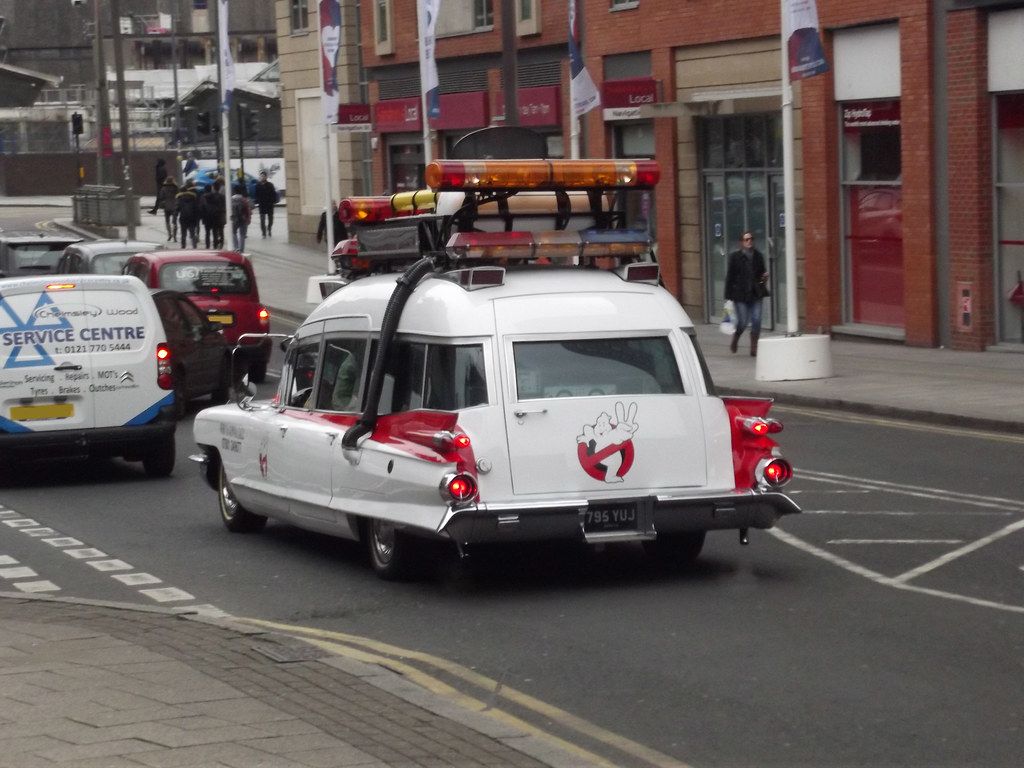
9. **The Ecto-1 from Ghostbusters**The instantly recognizable 1959 Cadillac Miller-Meteor, affectionately known as the Ecto-1, holds a special place in cinematic lore as the ghost-chasing vehicle from the beloved “Ghostbusters” franchise. Driven by the fearless duo of Dan Aykroyd and Harold Ramis, this ambulance conversion became an iconic symbol of paranormal investigation, its sirens and distinctive design signaling the arrival of the world’s most capable ghost hunters.
After years of service on the silver screen, the original Ecto-1 fell into a state of disrepair, a common fate for demanding film props. However, dedicated efforts by Sony led to its meticulous restoration, bringing it back to its former glory. This beautifully restored vehicle was proudly put on display outside its Ghost Corps building, serving as a promotional highlight for “Ghostbusters: Afterlife.” Furthermore, the Hollywood Star Car Museum in Gatlinburg also claims to have an original Ecto-1 from the 1984 movie on display, offering fans another opportunity to see this piece of cinematic history.
Interestingly, during the filming of “Ghostbusters 2,” the Ecto-1 itself experienced a mechanical failure, effectively “dying” on set. This led to a second Miller-Meteor, which had previously been used as a prop car in the original movie, being pressed into service and becoming known as the Ecto-1A. This replacement vehicle admirably took over the primary role, continuing the ghost-busting adventures.
Tragically, the Ecto-1A also fell into a state of disrepair following the sequel’s release. However, in a strange and fortunate twist of fate, it was never restored, a decision influenced by the funds already spent on the original Ecto-1’s refurbishment. This aging, unrestored Ecto-1A proved to be in an ideal state for its triumphant return in the 2021 sequel “Ghostbusters: Afterlife,” where it perfectly portrayed a dilapidated version of the iconic Ecto-1, ensuring its unique legacy lived on for a new generation of fans.
Read more about: Where Did the Fun Go? 14 Legendary Tech Toys & Brands Guys Just Don’t Collect Anymore
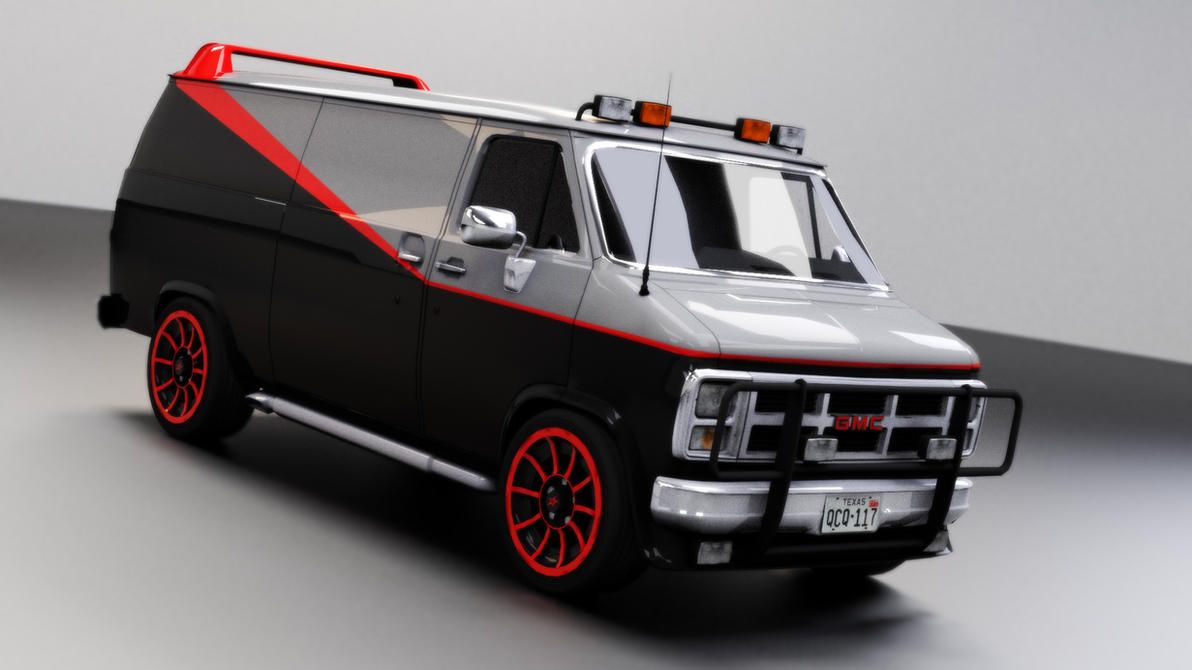
10. **The A-Team van**Anyone who lived through the 1980s will undoubtedly harbor fond memories of the A-Team van, a modified black and metallic-gray 1983 GMC Vandura, and the ragtag band of mercenaries who drove it. This instantly recognizable vehicle was the mobile command center for the plan-making, cigar-loving leader John “Hannibal” Smith and his trusted associates: Templeton “Faceman” Peck, “Howling Mad” Murdock, and the unforgettable mohawked B.A. Baracus, whose catchphrases became part of pop culture.
The van was a distinctive character in its own right, sporting a bold red stripe that tapered across its sides, prominent mounted fog lights on both its roof and grill, a rugged front bull bar, and a sleek red rear spoiler. This iconic design was the brainchild of legendary car customizer George Barris, a man responsible for many celebrated vehicles in television and movie history, including the unforgettable 1966 Batmobile. His touch ensured the A-Team van stood out from any other on the road.
Given the action-packed nature of the show, which frequently involved jumps, crashes, and intense pursuit sequences, multiple vans were naturally utilized throughout the series’ five seasons. Pinpointing the exact location of all six of these original vehicles today is a difficult task, as they have been dispersed over the years.
However, much to the delight of enthusiasts and nostalgic fans, at least one of these original A-Team vans is proudly on display for public viewing at the Orlando Auto Museum at Dezerland Park. Additionally, a stunt van, which endured the rigors of filming, now resides at the Hollywood Cars Museum in Las Vegas. Fans looking to connect with a piece of this beloved 80s phenomenon simply must make the effort to go see them.
Car Model Information: 1992 GMC Vandura G25 2dr Cargo
Name: Chevrolet/GMC van
Production: 1964–1996
Assembly: Flint Truck Assembly,Pontiac East Assembly
Predecessor: Chevrolet Corvair 95,Chevrolet Suburban#Sixth generation (1967)
Successor: Chevrolet Express
Manufacturer: Chevrolet
BodyStyle: Full-size car,van
Caption: 1992–1996 Chevrolet Sportvan
Categories: 1970s cars, 1980s cars, 1990s cars, All-wheel-drive vehicles, All Wikipedia articles written in American English
Summary: The Chevrolet van or Chevy van (also known as the Chevrolet/GMC G-series vans and GMC Vandura) is a range of vans that was manufactured by General Motors from the 1964 to 1996 model years. Introduced as the successor for the rear-engine Corvair Corvan/Greenbrier, the model line also replaced the panel van configuration of the Chevrolet Suburban. The vehicle was sold both in passenger van and cargo van configurations as well as a cutaway van chassis that served as the basis for a variety of custom applications.
Produced across three generations (1964–1966, 1967–1970, and 1970–1996), the model line was sold under a wide variety of model names under both the Chevrolet and GMC brands. The first two generations were forward control vehicles (with the engine placed between the seats); the third generation adopted a configuration placing the engine forward of the driver. The second and third generations shared powertrain commonality with the C/K pickup truck model line.
After the 1996 model year, GM retired the G-Series vans, replacing them with the GMT600-platform Chevrolet Express and GMC Savana.
Get more information about: Chevrolet van
Buying a high-performing used car >>>
Brand: GMC Model: Vandura
Price: $19,950 Mileage: 42,012 mi.
Read more about: The 13 Best Free Online Certifications to Boost Your Resume in 2025: Driving Your Career Forward

11. **The Batmobile (various iterations)**The Batmobile stands as one of the most iconic TV and movie cars of all time, unequivocally topping the list when it comes to the superhero genre. Throughout the decades, this legendary vehicle has undergone several spectacular iterations, evolving from the quirky, somewhat whimsical Batmobile of the 1960s TV show to the more recent, formidable beasts driven by Ben Affleck and Robert Pattinson in their respective cinematic universes, each design reflecting the changing tone of Gotham’s dark knight.
While it’s a matter of fervent debate among fans as to which is the single “best” Batmobile, the supercharged cruiser from Tim Burton’s 1989 “Batman” and its 1992 sequel “Batman Returns” has certainly achieved undisputed legendary status. Its sleek, powerful design, crafted by Anton Furst, became an instant icon, and it even stormed back onto the big screen in 2023’s “The Flash,” with the iconic Mercedes-Benz concept car and Michael Keaton’s returning Batman proving to be a definite highlight of the film.
For those eager to witness this piece of cinematic history firsthand, several versions are available for public viewing. One of the Batmobiles used in 1989’s “Batman” is proudly displayed at the Petersen Automotive Museum in Los Angeles. Another from that same film is housed at the Hollywood Cars Museum in Las Vegas, offering a unique opportunity for West Coast fans.
Furthermore, a Batmobile from the 1992 sequel, “Batman Returns,” is on display at the Hollywood Star Cars Museum in Gatlinburg, Tennessee, allowing visitors to appreciate the slight design evolutions. But the legacy stretches back even further to the original 1966 Batmobile, a stunning customized version of the 1955 Lincoln Futura concept car, which holds a special place in the hearts of many Batfans; after residing for years at Gatlinburg’s Guinness World Records Museum, it has now found a new home at the Hollywood Star Cars Museum.
Sadly, not all Batmobiles enjoy such public adoration. The tank-like Tumbler from Christopher Nolan’s acclaimed Dark Knight trilogy is rumored to be gathering dust outside a warehouse in Dubai. However, there’s good news for its admirers: it reportedly still gets taken out for the occasional spin, ensuring its powerful presence isn’t entirely forgotten, even in retirement.
Read more about: Beyond the Silver Screen: Unearthing the Fates of Film and TV’s Most Famous Automotive Stars
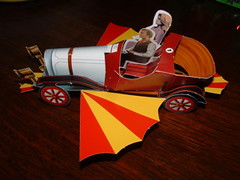
12. **Chitty Chitty Bang Bang**From the whimsical world of children’s cinema soared Chitty Chitty Bang Bang, the magical car that captured the imaginations of audiences worldwide. This extraordinary, custom-built vehicle, capable of flight and aquatic travel, remains one of the most beloved and fantastical automobiles in film history, instantly recognizable for its distinctive design and charming personality.
The unique allure of Chitty Chitty Bang Bang translated directly into its real-world value after its cinematic adventures concluded. This truly special custom-built car eventually found a new owner at an auction in Los Angeles, fetching an impressive price of over $800,000. This remarkable sum is a testament to its enduring iconic status and the deep affection it continues to inspire in generations of fans.
Its journey from the silver screen to a private collection ensures that the legacy of this incredible, custom-built machine lives on. Chitty Chitty Bang Bang remains a symbol of imagination, adventure, and the magic that movies can bring to life, cementing its place not just as a prop, but as a cherished character in its own right, a testament to the power of cinematic storytelling.
Read more about: Beyond the Silver Screen: 14 Simple Facts About James Bond’s Aston Martin DB5 That the Movies Changed
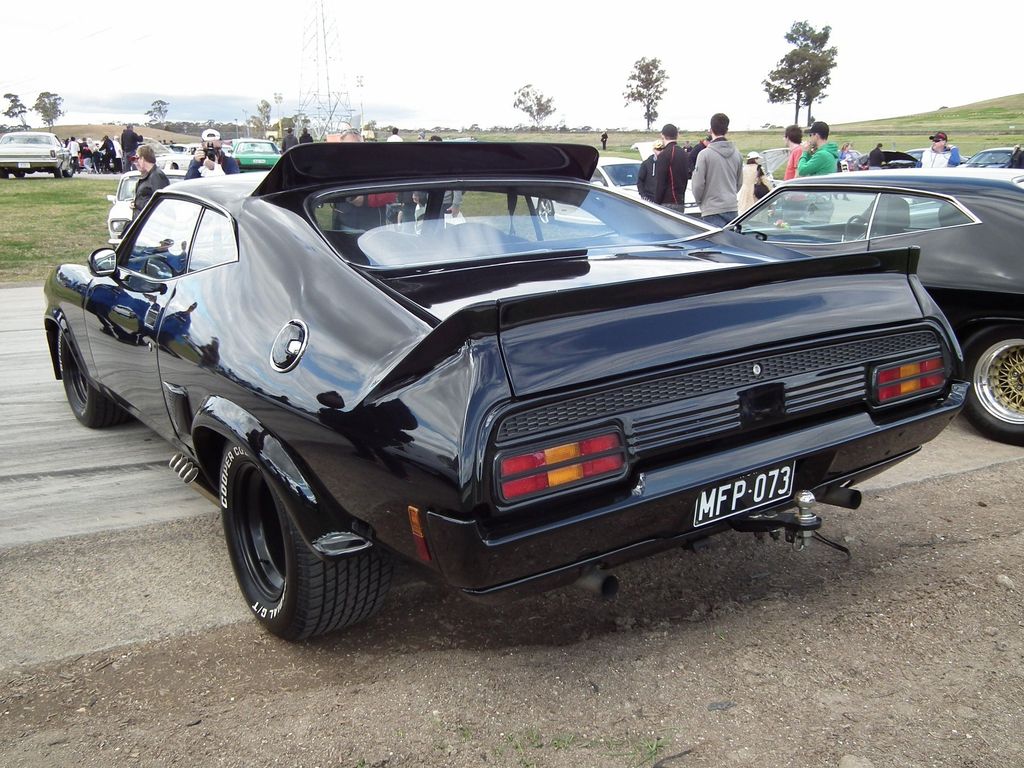
13. **Mad Max Interceptor**In the stark, dystopian landscape of the “Mad Max” franchise, vehicles are not merely transportation; they are integral to survival, defining the very essence of the world. Among these, the 1973 Ford Falcon XB GT Coupe, famously known as the Interceptor, stands out as a true icon of automotive aggression and post-apocalyptic power, a visceral symbol of rebellion against the wasteland.
This formidable machine, with its distinctive supercharger and rugged modifications, played a crucial role in establishing the visual impact and raw intensity of the “Mad Max” films, driving the very narrative of a society clinging to survival. It embodies the outlandish and powerful vehicles that are central to the franchise’s enduring appeal, setting a benchmark for cinematic car design.
Today, after its extensive and demanding service in the Wasteland, the legendary Interceptor has found a more peaceful, yet equally prominent, existence. It currently belongs to the distinguished Dezer Collection Museum in Florida. This ensures that its unique blend of power and post-apocalyptic design is preserved and admired by generations of movie buffs and automotive enthusiasts, standing as a testament to its unforgettable role in cinematic history.
Car Model Information: 1963 Ford Falcon Coupe
Categories: All set index articles, Articles with short description, Ford vehicles, Set index articles on cars, Short description is different from Wikidata
Summary: The Ford Falcon is an automobile nameplate by Ford that applied to several vehicles worldwide.
Ford Falcon (Australia), a car manufactured by Ford Australia from 1960 to 2016
Ford Falcon (North America), an automobile produced by Ford from 1960 to 1970
Ford Falcon (Argentina), a car built by Ford Argentina from 1962 until 1991
Ford Falcon van, a passenger variant of the first generation Ford E Series van (based on the Falcon platform) produced by Ford in the 1960s.
Get more information about: Ford Falcon
Buying a high-performing used car >>>
Brand: Ford Model: Falcon
Price: $24,508 Mileage: 8,269 mi.
Read more about: Uncovering Unprecedented Value: A Consumer’s Guide to 12 SUVs with Significant Price Drops in 2025
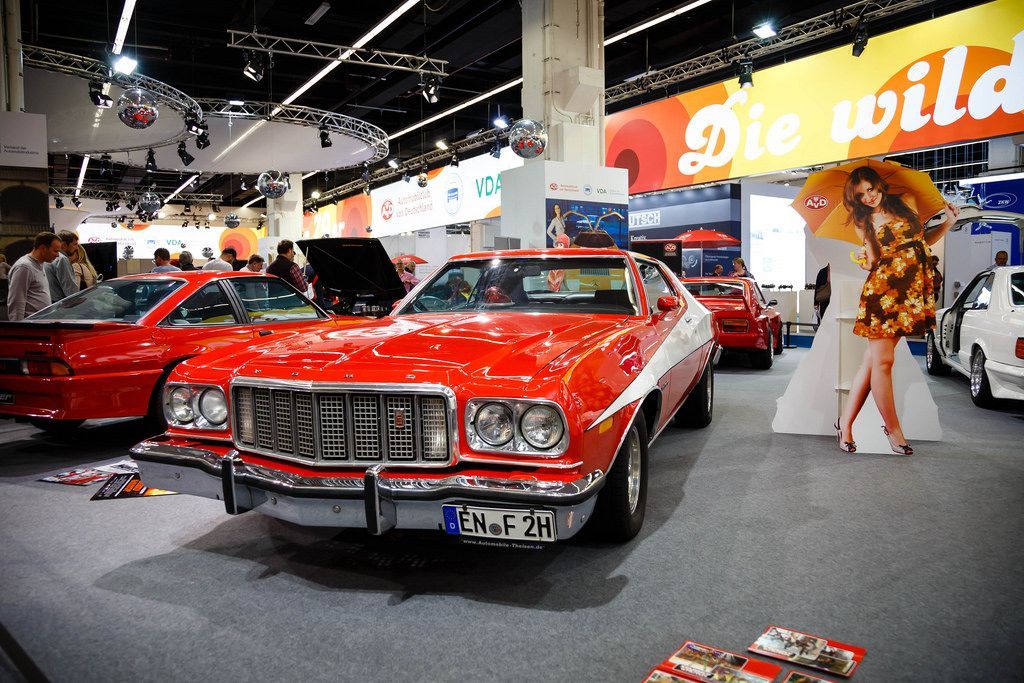
14. **The Ford Gran Torino from Starsky & Hutch**The vibrant red and white 1976 Ford Gran Torino, affectionately nicknamed the “striped tomato” by its on-screen co-star Paul Michael-Glaser, is undeniably one of television’s most recognizable cars. It became an inseparable part of the iconic police drama “Starsky & Hutch,” a symbol of detective work and high-speed chases through the streets of Bay City.
Following the show’s runaway success, Ford capitalized on its popularity by producing between 1,000 to 1,300 special-edition Ford Gran Torino replicas for sale to the general public in 1976. This widespread availability of similar-looking vehicles makes the task of tracking down the original filming cars a particularly challenging, yet rewarding, endeavor for collectors and fans.
Despite the proliferation of replicas, several of the original cars used during the demanding filming of the series have managed to survive the rigors of production. Of the up to ten vehicles reportedly utilized, a couple of these authentic “striped tomatoes” are indeed still around for enthusiasts to admire.
One of these precious survivors is proudly on display at the Hollywood Cars Museum in Las Vegas, sitting alongside many other famous movie and TV show vehicles, a true star among stars. While another was previously housed at the prestigious Peterson Automotive Museum in Los Angeles, it no longer seems to be there. Interestingly, another of the originals was sold at auction back in 2014 for a surprisingly modest $40,000 to a private collector, highlighting the varied paths these automotive legends take after their moment in the spotlight.
Car Model Information: 2024 Buick Enclave Premium FWD
Aka: Ford Fairlane (Venezuela)
Name: Ford Torino
Caption: 1970 Ford Torino Cobra SportsRoof
Manufacturer: Ford Motor Company
Production: 1968–1976
Class: Mid-size car,muscle car
Layout: FR layout
Related: Mercury Montego
Assembly: ubl
Predecessor: Ford Fairlane (Americas)
Successor: Ford LTD II
Categories: 1960s cars, 1970s cars, All Wikipedia articles written in American English, All articles with vague or ambiguous time, Articles with short description
Summary: The Ford Torino is an automobile that was produced by Ford for the North American market between 1968 and 1976. It was a competitor in the intermediate market segment and essentially a twin to the Mercury Montego line.
Just as the Ford LTD had been the upscale version of the Ford Galaxie, the Torino was initially an upscale variation of the intermediate-sized Ford Fairlane. In the 1968 and 1969 model years, the intermediate Ford line consisted of lower-trim Fairlanes and its subseries, the upper-trim Torino models. In 1970, Torino became the primary name for Ford’s intermediate, and the Fairlane was now a subseries of the Torino. In 1971, the Fairlane name was dropped altogether, and all Ford intermediates were called Torino.
Most Torinos were conventional cars, and generally the most popular models were the four-door sedans and two-door hardtops. However, Ford produced some high-performance “muscle car” versions of the Torino by fitting them with large powerful engines, such as the 428 cu in (7.0 L) and 429 cu in (7.0 L) “Cobra-Jet” engines. Ford also chose the Torino as the base for its NASCAR entrants, and it has a successful racing heritage.
Get more information about: Ford Torino
Buying a high-performing used car >>>
Brand: Ford Model: Gran Torino
Price: $29,997 Mileage: 37,001 mi.
Read more about: The 14 Wildest Rides Driven by Hollywood’s Funniest Folks on Screen!
From roaring engines that defined cinematic car chases to the fantastical machines that transported us through time and space, these cars have etched themselves deeply into the fabric of Hollywood history. They are far more than mere props; they are indelible characters, driving the plot, embodying entire genres, and sparking the imaginations of countless fans across generations. Whether they find dignified retirement in the hallowed halls of museums, are lovingly restored by private collectors, or tragically fade into obscurity, their legacies on the silver screen remain utterly immortal, continuing to inspire awe and nostalgia with every mention. These automotive icons remind us of the powerful magic of movies and the unforgettable bond we form with the machines that help tell their stories.

